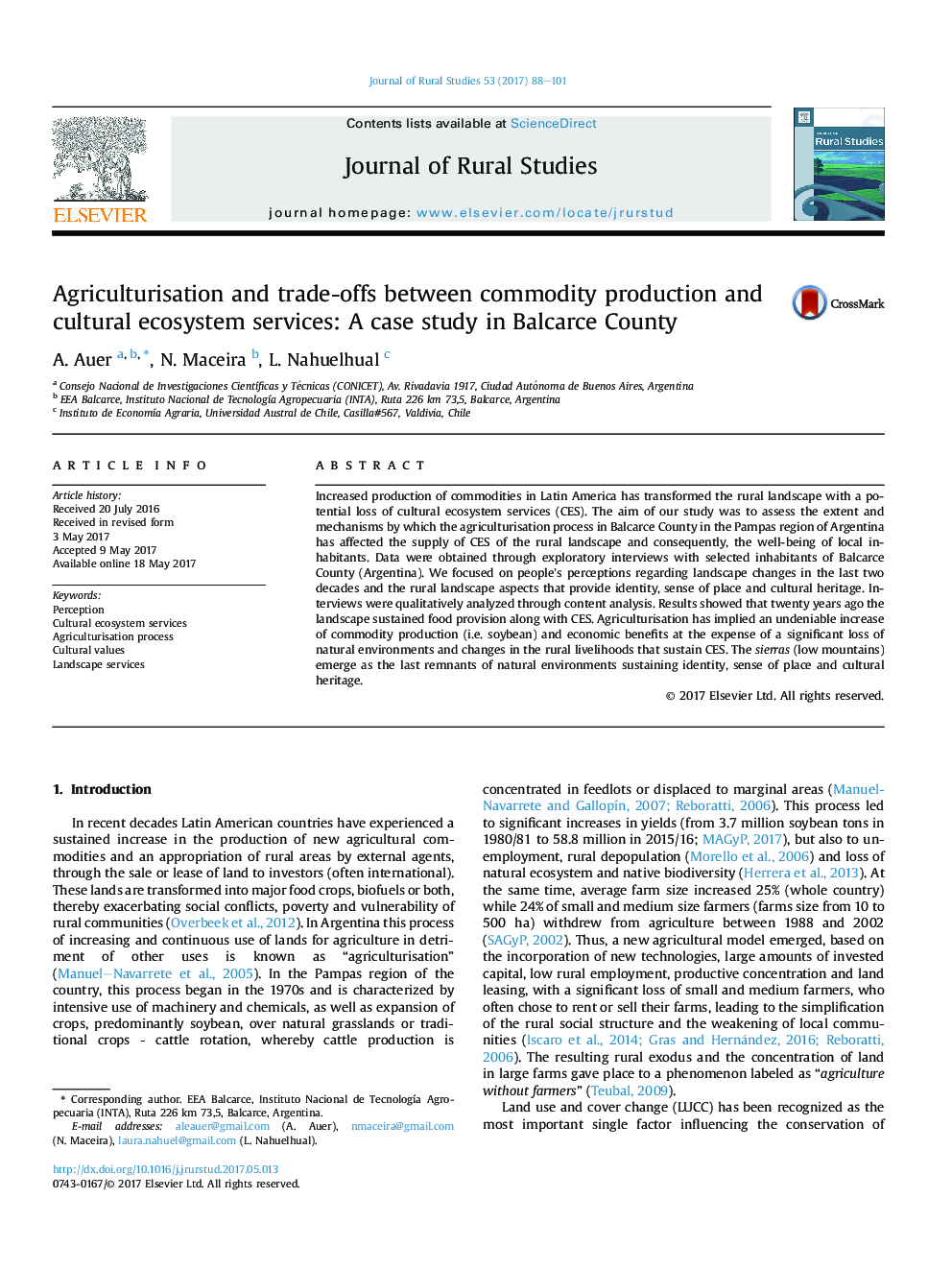| Article ID | Journal | Published Year | Pages | File Type |
|---|---|---|---|---|
| 6459986 | Journal of Rural Studies | 2017 | 14 Pages |
•Traditional agricultural practices had a synergistic relationship with the cultural services.•Soybean boom had impact the natural aspects of landscape, but also the social ones.•Changes on productive activities also modify the intangible values of landscape.•Planning policies are needed to protect the natural remnants and traditional social practices.•Intrinsic and social values of rural landscape must be included in planning policy.
Increased production of commodities in Latin America has transformed the rural landscape with a potential loss of cultural ecosystem services (CES). The aim of our study was to assess the extent and mechanisms by which the agriculturisation process in Balcarce County in the Pampas region of Argentina has affected the supply of CES of the rural landscape and consequently, the well-being of local inhabitants. Data were obtained through exploratory interviews with selected inhabitants of Balcarce County (Argentina). We focused on people's perceptions regarding landscape changes in the last two decades and the rural landscape aspects that provide identity, sense of place and cultural heritage. Interviews were qualitatively analyzed through content analysis. Results showed that twenty years ago the landscape sustained food provision along with CES. Agriculturisation has implied an undeniable increase of commodity production (i.e. soybean) and economic benefits at the expense of a significant loss of natural environments and changes in the rural livelihoods that sustain CES. The sierras (low mountains) emerge as the last remnants of natural environments sustaining identity, sense of place and cultural heritage.
